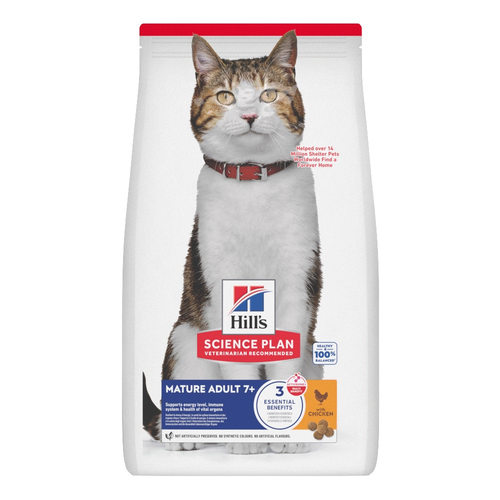
-
Find the right food for your petTake this quiz to see which food may be the best for your furry friend.Find the right food for your petTake this quiz to see which food may be the best for your furry friend.Featured products
 Large Breed Adult Dog Food
Large Breed Adult Dog FoodHill's Science Plan Large Breed Adult Dog Food with Lamb & Rice is a complete pet food, specially formulated with ActivBiome+ Multi-Benefit Technology.
This food is specifically designed to fuel the energy needs of large breed dogs during the prime of their life.Shop Now Adult Light Dog Food
Adult Light Dog FoodHill's Science Plan Light Adult Wet Dog Food is a complete premium pet food for adult dogs that tend to gain weight easily. This deliciously smooth loaf is formulated to deliver the appropriate amount of energy to support weight maintenance in adult dogs.
Shop Now Perfect Digestion Large Breed Puppy Food
Perfect Digestion Large Breed Puppy FoodPrecisely balanced nutrition with Hill's ActivBiome+ prebiotic blend actively contributes to supporting digestive health and overall wellbeing to help your pet feel their best
Shop NowFeatured products Sterilised Adult Cat Food
Sterilised Adult Cat FoodHill's Science Plan Adult Sterilised Cat Dry Food with Salmon is specially formulated with ActivBiome+ Multi-Benefit Technology. It is a precisely balanced nutrition, tailored to meet the needs of sterilised cats, to help keep sthem lean & healthy.
Shop Now Adult Cat Food
Adult Cat FoodHill's Science Plan Adult Cat Food with Chicken is a complete pet food, specially formulated with ActivBiome+ Multi-Benefit Technology.
This food is specially formulated to fuel the energy needs of cats during the prime of their life.Shop Now CULINARY CREATIONS ADULT CAT FOOD
CULINARY CREATIONS ADULT CAT FOODHill's Science Plan CULINARY CREATIONS Adult cat food with Salmon & Carrots was formulated to provide a great-tasting experience to cats. Its delicious flavour and texture are combine with essential nutrients to support cats' optimal health during the prime time of their life. Specially formulated with high-quality salmon protein, essential taurine for heart health & balanced minerals to support kidneys & bladder.
Shop Now -
Dog
- Dog Tips & Articles
-
Health Category
- Weight
- Food & Environmental Sensitivities
- Urinary
- Digestive
- Joint
- Kidney
-
Life Stage
- Puppy Nutrition
- Adult Nutrition
- Senior Nutrition
Cat- Cat Tips & Articles
-
Health Category
- Weight
- Skin & Food Sensitivities
- Urinary
- Digestive
- Kidney
-
Life Stage
- Kitten Nutrition
- Adult Nutrition
Featured articles Microchipping: The Facts | Hill's Pet
Microchipping: The Facts | Hill's PetThe government has announced that as of April 2016, all dogs in the UK must be microchipped by law.
Read More Pet Nutrition: What Makes "Healthy" Pet Food Healthy? | Hill's Pet
Pet Nutrition: What Makes "Healthy" Pet Food Healthy? | Hill's PetIn people, the right diet is very important. If you are eating the wrong way for your metabolism, activity level, age and lifestyle you could end up with health issues.
Read More The Incredible Science Behind Your Pet's Microbiome
The Incredible Science Behind Your Pet's MicrobiomeLearn what your pet's microbiome is, how it contributes to your pet's gut and overall health, and why nutrition is important in maintaining healthy microbiomes.
Read More -


You may tease someone for being a "scaredy-cat" or even get a chuckle when something startles your cat and makes them jump. But a fearful, anxious cat is no joke. Cat anxiety can be a serious problem that compromises your cat’s welfare. If you think you might be dealing with a stressed cat, keep reading in order to understand what's going on and how you can help them.
Cat anxiety explained

Cats experience anxiety when they perceive a threat, whether real or imaginary, and respond to this threat with typical fear reactions. In other words, an anxious cat may appear stressed and afraid for no obvious reason. However, this doesn't mean that there isn't a reason. It simply means that it may take some time and investigation to determine the cause.
Potential causes for anxiety include pain or illness, psychological stress from living in a multi-cat household, a traumatic experience, lack of proper socialisation, a history of abuse or neglect or declining senses and loss of memory associated with an ageing brain. Joint pain in older cats can also be a source of anxious behaviours, such as hiding or failing to use the litter box. Other potential causes of cat anxiety can include new or moved furniture, a new pet or baby in the home, or even a new home.
So how can you tell if you have an anxious cat?
Signs of stress in cats
An anxious cat isn't too difficult to spot. Here are the common signs and symptoms of general cat anxiety or stress:
- Withdrawal and hiding
- Becoming less active
- Trying to escape
- Loss of appetite/overeating
- Destructive or aggressive behaviour
- Diarrhoea
- Urine marking or litter box avoidance
- Hair loss, sores and lesions resulting from over-grooming
Other signs include weight loss, excessive vocalisation, lethargy and restlessness. Cats are generally solitary creatures and are quite happy spending time on their own. Some cats, however, are very attached to their family and may experience distress related to separation from their owner. If your cat is fine as long as you're around but starts showing anxious behaviours when you do things associated with departure, such as picking up your keys or closing the curtains, you should seek help from a qualified behaviourist.


Tasty Tips
Helping your stressed cat
The first thing you need to know in order to help your anxious cat is that you should never punish or scold them for their anxious behaviour. This will only increase negative associations and fear and make things worse instead of better. It will also damage the bond between you and your cat. The goal should be to help them feel safe and relaxed in their surroundings.
 Once you've identified anxious behaviours in your cat, the first step is to make an appointment with your veterinarian to either diagnose or rule out any underlying health issues, such as pain and discomfort, that might be causing your cat stress. Because cats tend to hide their pain, this is not something that is likely to be obvious and may require a thorough examination as well as other diagnostic procedures like blood tests or X-rays. If it turns out that your cat is suffering from pain or a medical issue, treating the issue may be all that's required to resolve their anxiety and help your cat get back to their normal self.
Once you've identified anxious behaviours in your cat, the first step is to make an appointment with your veterinarian to either diagnose or rule out any underlying health issues, such as pain and discomfort, that might be causing your cat stress. Because cats tend to hide their pain, this is not something that is likely to be obvious and may require a thorough examination as well as other diagnostic procedures like blood tests or X-rays. If it turns out that your cat is suffering from pain or a medical issue, treating the issue may be all that's required to resolve their anxiety and help your cat get back to their normal self.
On the other hand, if your vet rules out a physical problem as the cause, this may mean that the issue is psychological. If this is the case, your vet should be able to advise you on a course of treatment.
Your vet may recommend a board-certified veterinary behaviourist if your cat requires anti-anxiety medication or a qualified behaviourist or trainer who can help both you and your cat with environmental management and behaviour modification. Behaviour modification involves identifying the triggers for anxiety in your cat’s life in order to create a new, positive emotional association through the process of desensitisation and counter-conditioning to these triggers. Environment management involves changing the environment to avoid a behaviour problem, such as removing anxiety triggers from the environment. For example, if your cat is anxious about trips in the cat carrier, you can reward them with a favourite toy or treat whenever they choose to hang out in or near the carrier. In time, they’ll associate the carrier with these positive rewards and no longer be anxious when they go inside. The overall goal of this training and conditioning is to teach your cat that they're safe and that it's okay to relax. These kinds of behavioural modifications must be done under expert guidance. If done in the wrong way, you risk reinforcing the fear or anxiety and may make the situation worse.
Multi-cat households: a common cause of stress and anxiety
Multi-cat households deserve a special mention because living with other cats nearby, even in the neighbourhood, is a major cause of stress and illness in cats. As previously mentioned, cats are solitary creatures by nature and generally view other cats as a threat to their precious resources. Having only one cat is probably the best thing you can do to try to prevent stress and anxiety in the first place. If you do have a multi-cat household and you have one or more cats showing signs of stress, try the following to help reduce conflict and stress:
- Have multiple food and water stations around the house in quiet places. You should have one more of these stations than the number of cats in the home.
- Multiple litter trays – again, one more than the number of cats. These should be away from food and water and in secluded places.
- Use shelves and furniture strategically placed in hallways and passages so the cats can pass each other at different levels.
- Have more than one cat flap if possible so that dominant cats can’t obstruct access to the outside for the more timid cats.
- Provide plenty of elevated hiding places and beds so that all the cats can get away from each other whenever they need to.
- Consider rehoming. Sadly, some cats just don’t cope well living with other cats. For these cats, a new home where they can feel safe and relaxed may be the best option.
- Nutrition. There are certain therapeutic foods with natural additives that can help alleviate stress in cats.
- Allow safe access to the outdoors. Indoor living is a big cause of stress in many cats, even if they live alone.
If left untreated
Untreated anxiety won't get better on its own and will likely become worse over time, with undesirable behaviours becoming more pronounced. Just as with humans, chronic stress can have a myriad of effects on your cat’s physical health. If it persists, it could compromise their immune system and make them more vulnerable to illness, which will, in turn, compound the stress, leading to additional behavioural problems. It's not only in your cat's best interest to address any anxiety as quickly as possible but also in yours, so you can maintain the peace of your home.
If you think your cat is suffering from anxiety, take heart. With love, patience and assistance from qualified professionals, you can help your cat to live a healthier, happier life.
Reviewed by Dr. Hein Meyer, DVM, PhD, Dipl-ECVIM-CA and Dr. Aileen Pypers, BSc, BVSc, PGDip.


Jean Marie Bauhaus is a pet parent, pet blogger, and novelist from Tulsa, Oklahoma, where she usually writes under the supervision of a lapful of fur babies.
Related products

Hill's Science Plan CULINARY CREATIONS Adult cat food with Salmon & Carrots was formulated to provide a great-tasting experience to cats. Its delicious flavour and texture are combine with essential nutrients to support cats' optimal health during the prime time of their life. Specially formulated with high-quality salmon protein, essential taurine for heart health & balanced minerals to support kidneys & bladder.

Hill's Science Plan Mature Adult Cat Food with Chicken is a complete pet food, specially formulated with ActivBiome+ Multi-Benefit Technology.
This food supports graceful aging in cats, providing a synergistic ingredient blend to help support energy & activity levels.

Hill's Science Plan Adult Sterilised Cat Dry Food with Salmon is specially formulated with ActivBiome+ Multi-Benefit Technology. It is a precisely balanced nutrition, tailored to meet the needs of sterilised cats, to help keep sthem lean & healthy.

Hill's Science Plan Adult Cat Food with Chicken is a complete pet food, specially formulated with ActivBiome+ Multi-Benefit Technology.
This food is specially formulated to fuel the energy needs of cats during the prime of their life.
Related articles

Learn how your cat's poo can be a good indicator of her overall health, including how to spot unhealthy or abnormal cat poop and what it might mean.

Understand common skin issues in cats and how to manage them effectively. Learn signs and prevention, and get care tips. Find out more at Hill's Pet.

Learn about the causes of cat dermatitis, how to spot the symptoms and the best treatment options. Visit Hill's Pet for detailed guidance and tips.

Cats with sensitive skin have special needs and even healthy cats can sometimes develop poor skin health. Learn more about sensitive skin symptoms in your cat, what you can do to help your pet feel more comfortable and get recommendations on sensitive skin cat food.

Put your cat on a diet without them knowing
Our low calorie formula helps you control your cat's weight. It's packed with high-quality protein for building lean muscles, and made with purposeful ingredients for a flavourful, nutritious meal. Clinically proven antioxidants, Vitamin C+E, help promote a healthy immune system.
Put your cat on a diet without them knowing
Our low calorie formula helps you control your cat's weight. It's packed with high-quality protein for building lean muscles, and made with purposeful ingredients for a flavourful, nutritious meal. Clinically proven antioxidants, Vitamin C+E, help promote a healthy immune system.

